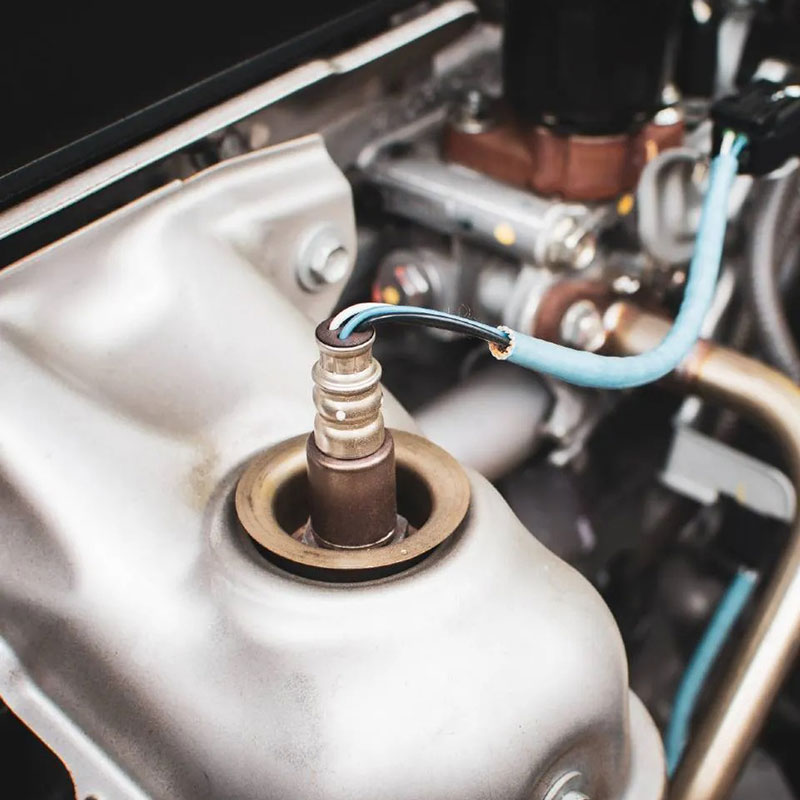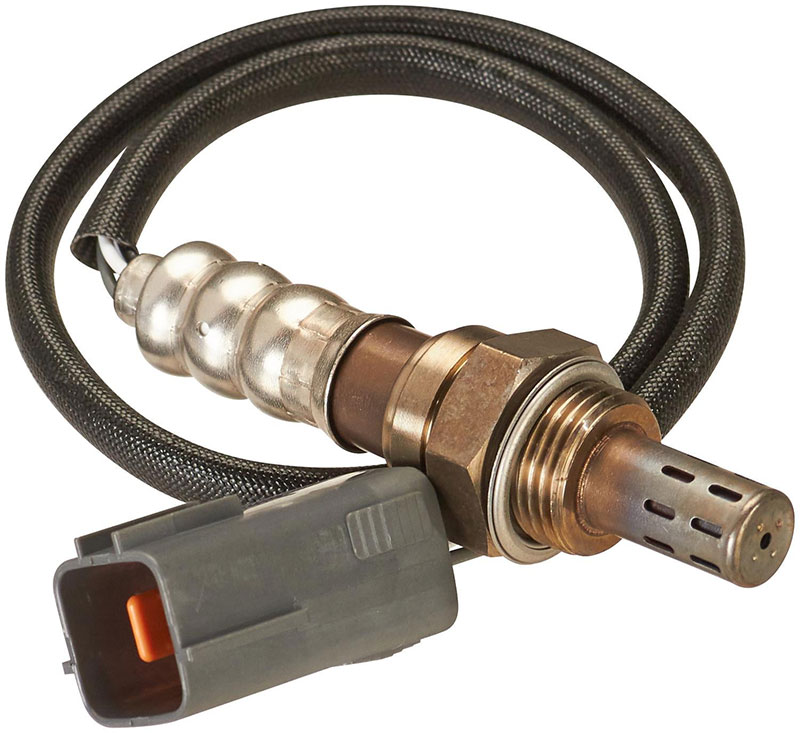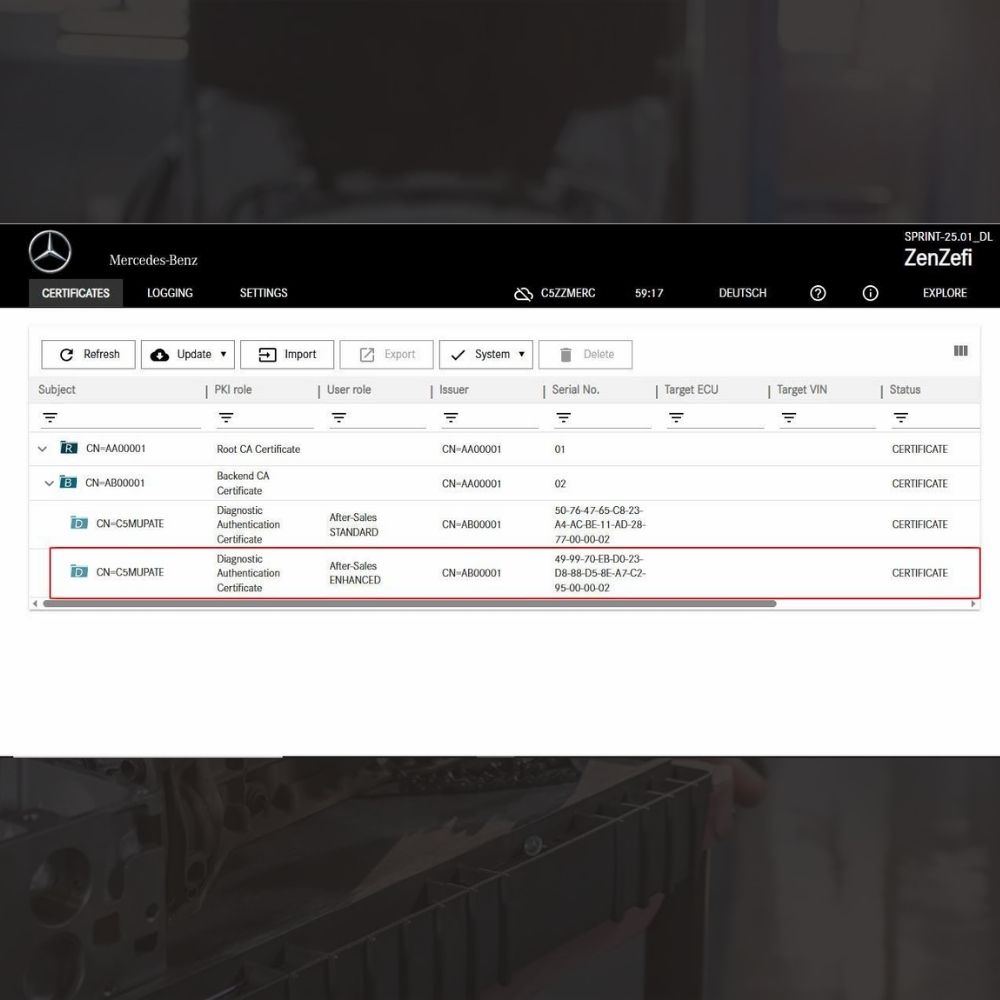

Automotive Oxygen Sensors: Function, Types, and Significance
Contents
- How Oxygen Sensors Work
- How does the oxygen sensor work with the rest of the exhaust system?
- Types of Automotive Oxygen Sensors
- Based on Technology
- Based on Design
- Based on Heating Element
- Oxygen Sensor Placement in Vehicles
- Symptoms of a Failing Oxygen Sensor
- Oxygen Sensor Maintenance and Replacement
- Diagnosing and Replacing Oxygen Sensors
- Conclusion
- Need Car Diagnostics, Coding, or Programming Support? Contact AutoExplain!
- FAQ
Oxygen sensors are designed to monitor the proportion of oxygen in the exhaust gases exiting an engine. Installed within the exhaust system, these sensors analyze unburned oxygen content, generating signals that are transmitted to the Engine Control Unit (ECU). This real-time feedback allows the ECU to adjust the air-fuel mixture, ensuring optimal engine performance and efficiency.
The goal of this system is to maintain the air-fuel ratio at 14.7:1 (stoichiometric ratio) for gasoline engines, ensuring complete combustion. This balance maximizes fuel efficiency while minimizing emissions, making oxygen sensors a key player in vehicle emission control strategies. Since 1981, these sensors have been mandatory in vehicles, significantly reducing global automotive pollution.
How Oxygen Sensors Work
The core principle of oxygen sensors is based on electrochemical reactions that generate measurable electrical signals in response to oxygen concentration differences. The sensor reacts to variations in the exhaust’s oxygen levels, producing voltage signals:
- High voltage (0.9V) indicates a rich mixture (excess fuel, low oxygen).
- Low voltage (0.1V) signals a lean mixture (insufficient fuel, high oxygen).
Most sensors utilize zirconia dioxide elements that become conductive at high temperatures. To achieve operational efficiency quickly, modern sensors incorporate heating elements, enabling them to function even in cold-start conditions.

How does the oxygen sensor work with the rest of the exhaust system?
The oxygen sensor plays a vital role in the efficiency of the catalytic converter. It measures the oxygen levels exiting the engine and relays that information to the ECU. This allows the ECU to adjust the air-fuel mixture, ensuring optimal combustion and minimal harmful emissions before the exhaust gases reach the catalytic converter.
“Regular maintenance can greatly extend the life of your oxygen sensors, saving you money in the long run,” says Maria Sanchez, an experienced automotive technician. This is particularly true for specialized systems like the Mercedes Benz exhaust system and the Ford Ranger exhaust system.
Types of Automotive Oxygen Sensors
Based on Technology
- Zirconia Sensors – The most common type, generating voltage based on oxygen level differences.
- Titania Sensors – Adjust electrical resistance instead of generating voltage, offering robust performance.
- Wideband (Linear) Sensors – Provide precise oxygen measurements, improving combustion control and fuel efficiency.
Based on Design
- Thimble-Type Sensors – Traditional design, requiring longer heating time.
- Planar-Type Sensors – Modern, compact design with faster response and improved durability.
Based on Heating Element
- Unheated Sensors (1-2 wires) – Older versions, relying on exhaust heat to function.
- Heated Sensors (3-4 wires) – Feature built-in heaters to improve response time and accuracy.
- Fast Light Off (FLO) & Ultra-Fast Light Off (UFLO) Sensors – Advanced sensors with ultra-quick warm-up times to reduce emissions.

Oxygen Sensor Placement in Vehicles
Modern vehicles contain multiple oxygen sensors placed strategically in the exhaust system:
- Upstream Sensor (Pre-Catalytic Converter): Measures the initial exhaust composition and helps the ECU fine-tune combustion.
- Downstream Sensor (Post-Catalytic Converter): Monitors catalytic converter efficiency by comparing oxygen levels before and after conversion.
- Multiple Sensors: Vehicles with V-configuration engines or diesel exhaust systems may use four or more oxygen sensors for enhanced monitoring.
Symptoms of a Failing Oxygen Sensor
A failing oxygen sensor can disrupt engine performance and increase emissions. Common symptoms include:
- Check Engine Light (CEL) – An illuminated CEL often signals a failing sensor.
- Decreased Fuel Efficiency – Poor readings from the sensor cause incorrect fuel injection adjustments.
- Rough Idling & Stalling – Misfires, hesitation, or unstable RPM can result from faulty sensors.
- Increased Emissions & Exhaust Odor – A failing sensor may cause excessive pollution and a noticeable sulfuric (rotten egg) smell.
Oxygen Sensor Maintenance and Replacement
- Replacement Intervals:
- Unheated sensors: Every 30,000 miles.
- Heated sensors: Every 60,000 – 100,000 miles.
- Cost Considerations:
- OEM sensors ensure precise compatibility but cost more.
- Aftermarket options are more affordable but vary in quality.
- Prolonging Sensor Life:
- Use high-quality fuel.
- Maintain proper engine tune-ups.
- Address oil consumption issues promptly.
Diagnosing and Replacing Oxygen Sensors
To diagnose an oxygen sensor issue, professional technicians use OBD-II scanners to retrieve trouble codes (e.g., P0130-P0167). Additional physical inspection and voltage testing can confirm the need for replacement.
When replacing an oxygen sensor:
- Ensure compatibility with your vehicle’s make and model.
- Consider using OEM sensors for reliability.
- Use anti-seize compound on threads for easy future removal.
Conclusion
Automotive Oxygen Sensors are essential for maintaining engine efficiency, fuel economy, and emission control. With advancements in sensor technology, modern vehicles benefit from real-time feedback loops that optimize combustion for better performance and reduced environmental impact.
Need Car Diagnostics, Coding, or Programming Support? Contact AutoExplain!
If you’re experiencing oxygen sensor issues or need professional car diagnostics, coding, or programming support, AutoExplain is here to help! We specialize in automotive repair solutions to keep your vehicle running at its best.
📞 Contact us on WhatsApp: +1(936)2896695 🌍 Visit our website: AutoExplain
Related content:
FAQ
- How often should I replace my oxygen sensor? Typically, every 60,000 to 90,000 miles.
- Can I drive with a bad oxygen sensor? Yes, but it can damage your catalytic converter and reduce fuel efficiency.
- How much does it cost to replace an oxygen sensor? The cost varies depending on the vehicle and the specific sensor, but it typically ranges from $100 to $300.
- What are the symptoms of a bad oxygen sensor? Reduced fuel economy, rough idling, misfires, and a check engine light.
- How can I test my oxygen sensor? Use an OBD-II scanner to read error codes.
- What causes an oxygen sensor to fail? Contamination, normal wear and tear, and physical damage.
- Can I clean my oxygen sensor? While some attempt to clean them, replacement is usually the best option.


New Mercedes Car Coding Solution with ZenZefi certificate for DTS Monaco 9.02

What is DTS Monaco? Key Functions of DTS Monaco Software

What is the Xentry Certificate Zenzefi? Why You Need It, and When It Is Required?



New Mercedes Car Coding Solution with ZenZefi certificate for DTS Monaco 9.02





